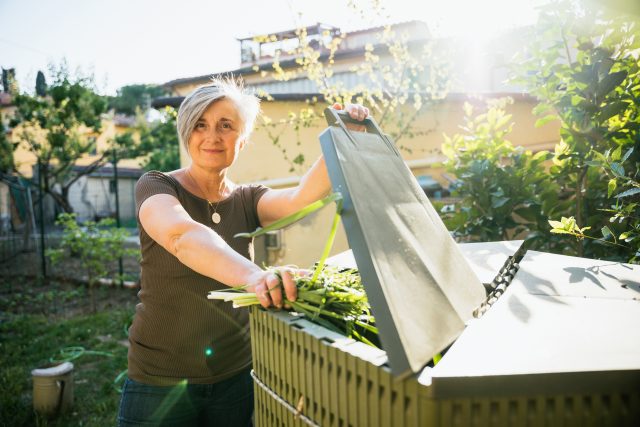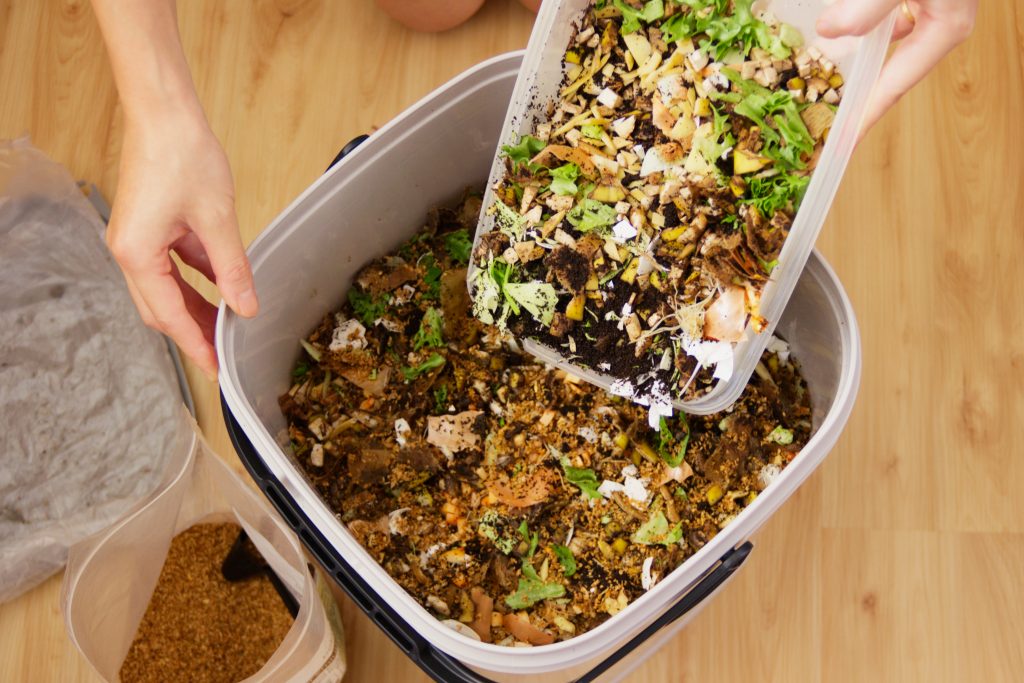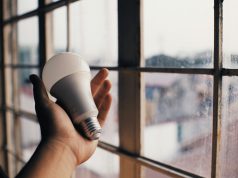
Composting is an environment-friendly way to recycle food and yard wastes into a nutrient-rich fertiliser. The more compost you use in your garden, the healthier your plants will be. However, the benefits of composting don’t end in the garden. Making your own compost at home has a lasting positive impact to the environment as it reduces trash in the environment while minimising the production of methane gas that’s produced by decomposing food wastes.
At home, you can make compost using a compost bin or a compost pile. While both methods produce the same results, this article will tell you about the benefits of using a compost bin at home.
What is a Compost Bin?
Compost bins are containers where you can place wet or dry food, yard scraps, and other compostable materials you want to make into compost. A compost bin can help improve the rate of decomposition by providing sufficient moisture and aeration. The appropriate moisture and air combination aid aerobic bacteria in faster decomposition of organic materials into compost.
Compost bins can be home-made or store-bought. Depending on the kind of bin you choose, the composting process can vary. For example, a Bokashi bin uses a bran-based compound to aid in the decomposition of organic matter in the bin. If you want to learn more about this, check out this post on how to use a Bokashi bin.
Other materials used for making compost bins include the following:
- Wood
- Plastic
- Stone
- Ceramic
- Wire fencing
Benefits of Compost Bins
Making your own compost at home using compost bins come with various benefits. These include the following:
- Fast. You can make compost more quickly with a compost bin than a traditional compost pile. The enclosed space speeds up the decomposition process by providing the right balance of moisture, heat, and airflow.
- Save or earn money. You can produce your own fertiliser to use in your eco-garden or to sell. This way, you don’t have to buy fertiliser from your local garden store. You can also sell your home-made compost to your friends or family to earn money.
- Keep pests away. Using a compost bin eliminates rodents and pets from getting into your food scraps.
- Keep foul smells away. Because of its enclosed feature, a compost bin keeps away foul smell that attracts flies and other pests.
- Low-maintenance. Compared with using a compost pile, compost bins are easier to clean.
- Maintain cleanliness. Placing food scraps in a compost bin keeps it out of sight, thus maintaining cleanliness.
- Affordable. Depending on the type of bins you choose, compost bins can be affordable.
- Space-saving. Depending on the size of bin you choose, you can save as little or as much space as you can.
- Modern features. Modern compost bins provide other advantages such as the facility to mix contents, thus saving energy and time. Other bins come with two compartments to allow you to complete one load while starting a new one. Some bins also come with wheels for quicker and more convenient moving.
Using a Compost Bin

Making your own organic fertilizer at home is a fulfilling experience. Not only will you make your plants and soil healthier, you also reduce the need for synthetic fertilizers while reducing your carbon footprint. Instead of manually turning over your compost, compost bins make the process less messy and without odors.
Here’s how to make your own compost at home:
- Choose a compost bin. The bin should have holes on the bottom and its sides to allow oxygen to circulate inside it.
- Choose a dry, shady, and level place to place your bin. You can place it near your garden or somewhere in your backyard. Check that it’s near a water source.
- Begin by adding one part of green matter to three parts brown matter to the bin.
Green matter includes:
- coffee grounds and coffee filters
- fruit and vegetable scraps
- leftover food (fresh, cooked, raw, or moldy)
- manure from herbivore animals
- crushed eggshells
Brown matter includes:
- Hay, straw, dead leaves
- Twigs and branches
- Cardboard
- Shredded newspaper
- Sawdust and wood chips, but not ash coals
- Grass clippings
- Natural tea bags and loose-leaf tea
- Add green and brown materials in layers.
- Add some water when adding green matter into the bin to make it moist, but not wet.
- When the pile has become dark brown, crumbly, and dry, resembling soil, the compost is ready to use on your yard or garden.
Final Thoughts
Composting at home is a safe way to help reduce waste in landfills while making organic fertiliser. Compost provides numerous benefits not only to soil and plants, but also to the environment. One way to make your own compost is using compost bins. The process becomes easier, cleaner, and quicker when using compost bins.













